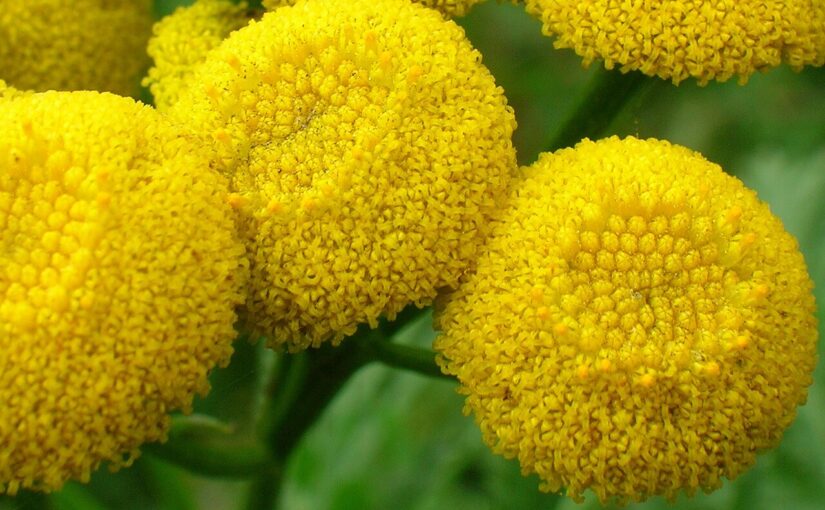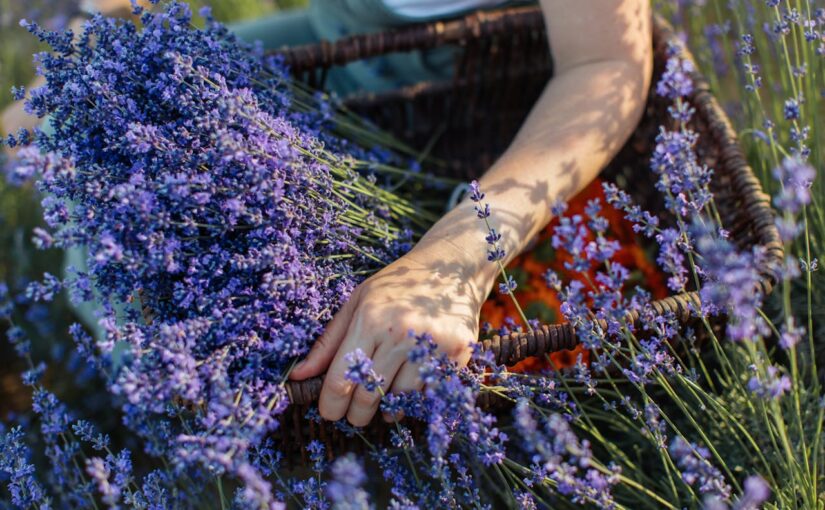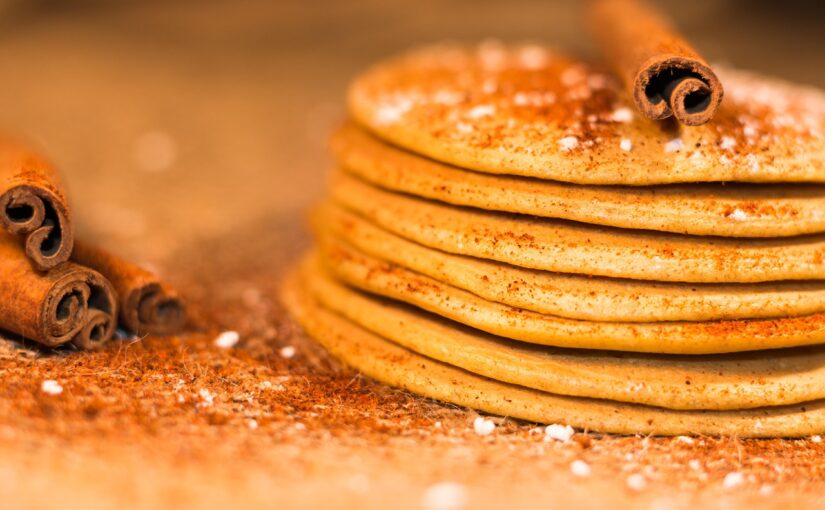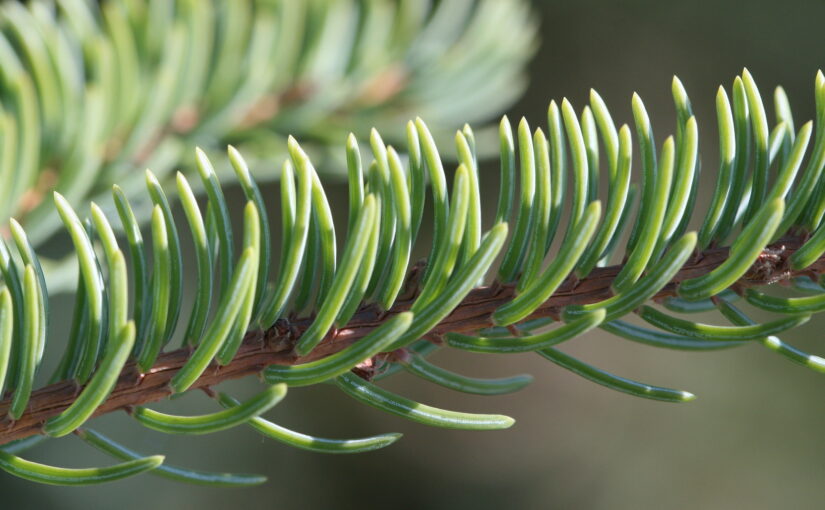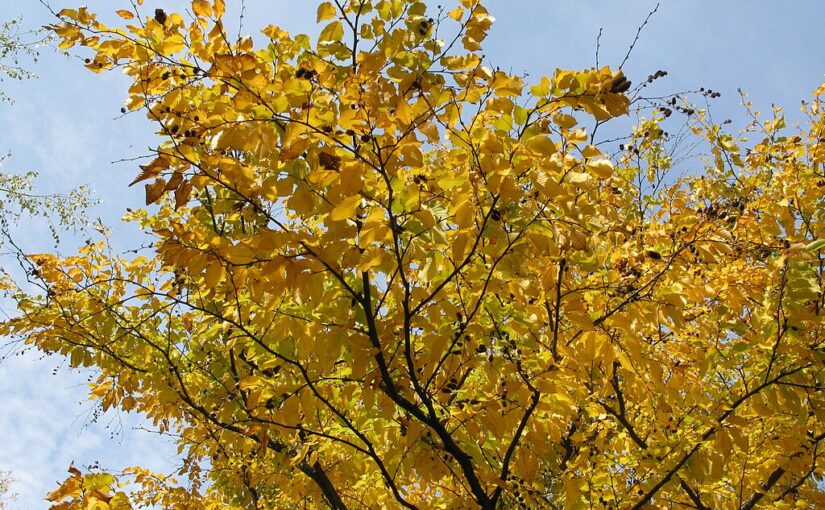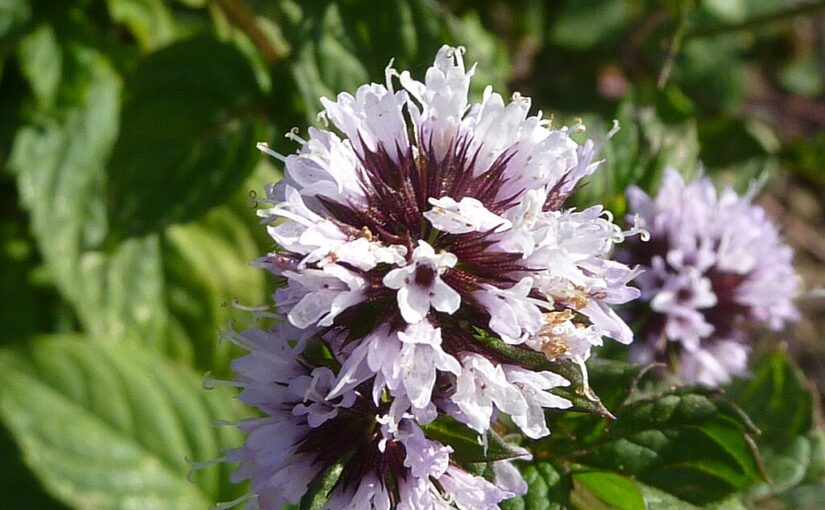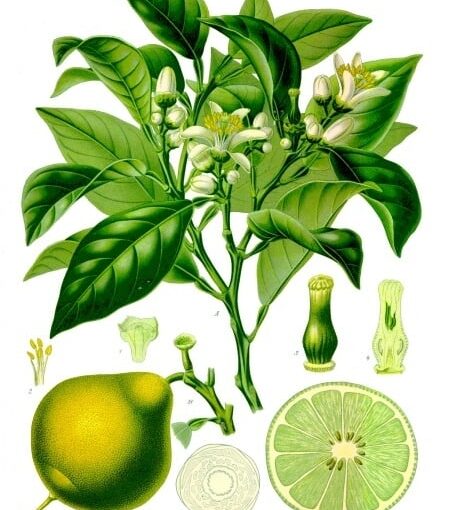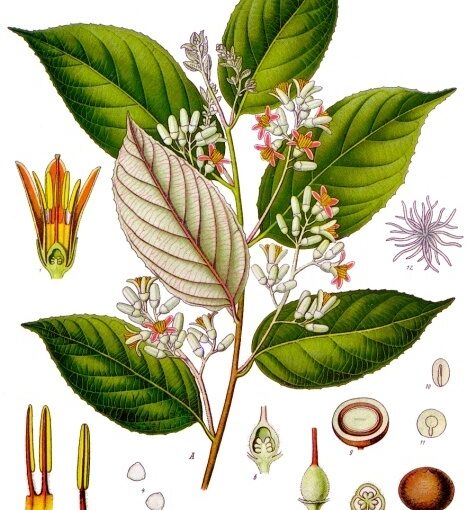Blue tansy essential oil is harvested from Tanacetum annuum, a perennial member of the Asteraceae family. Known by names such as blue tansy, Moroccan tansy, and Moroccan blue chamomile, this aromatic herb is native to the western Mediterranean and now flourishes primarily in northwestern Morocco. The oil is steam-distilled from the plant’s yellow, disc-shaped flowers and buds. Unlike its golden blossoms, the oil shines in a deep indigo blue, a result of chamazulene, a potent compound produced through distillation. The scent is an enchanting blend of floral, herbaceous, and sweet notes, underpinned by a fresh, slightly fruity character. Among its principal constituents are chamazulene, camphor, cymene, limonene, myrcene, phellandrene, pinene, and sabinene.
Continue reading Blue Tansy Essential Oil: The Indigo Spark of Inspired ActionMonth: September 2025
🌱 Nature’s Shield Plant Spray
A gentle, eco-friendly DIY remedy for healthier plants
🧾 Ingredients (for 1 Liter Spray)
- 1 L tap or rainwater 💧
- 5 drops organic dish soap 🧼 (or a pea-sized amount of soft soap)
- ~20 drops essential oil 🌸 (see options below)
- 1 tsp fine clay powder 🪨
- Spray bottle (1 L capacity) with a not-too-fine nozzle 🌿
Essential Oils in the Garden: Growing in Harmony with Nature
The movement toward natural living has reached the garden. Increasingly, home gardeners are searching for ways to cultivate thriving vegetables, fruits, and flowers without relying on synthetic sprays or chemical treatments. Many of us are familiar with essential oils as supportive tools for health, beauty, and emotional well-being. Yet fewer people know that these potent plant extracts can also serve as valuable allies in the garden. Essential oils can help deter pests, combat plant diseases, and even attract pollinators, transforming the outdoor space into a healthier and more balanced environment.
Continue reading Essential Oils in the Garden: Growing in Harmony with Nature🍊 Orange Cinnamon Pancakes Recipe
✨ Time: 10 minutes Serves: 6 pancakes
🌸 Ingredients
- 1 banana
- 1 cup plus 2 tablespoons oatmeal
- 2 eggs
- 1 egg white
- 3 tablespoons almond milk
- 1-2 drops orange essential oil (food grade)
- 1 drop cinnamon essential oil (food grade)
- Toppings: ghee, cinnamon powder, maple syrup or raw agave (optional)
Cooking with Essential Oils: Elevating the Culinary Canvas
Essential oils, revered tools in perfumery, cosmetics, and integrative health, are overdue for their moment in gourmet kitchens. For those who have mastered their chemistry, safety, and subtlety outside the realm of food, translating these potent botanical concentrates into culinary form is a practice saturated with possibility, layered flavor, precise dosing, and even bioactive complexity. Cooking with essential oils is not simply about swapping fresh basil for a distilled drop; it’s an utterly different manipulation of essence where the chef orchestrates both taste and therapeutic undertones.
Continue reading Cooking with Essential Oils: Elevating the Culinary CanvasBlack Spruce Essential Oil: The Grounding Essence of Vitality
Black spruce essential oil is extracted from the twigs and needles of Picea mariana, a member of the Pinaceae family and a native inhabitant of Canada’s vast boreal forests. This slow-growing conifer has become prized for its steady resilience and aromatic qualities. Steam distillation yields a clear to pale yellow oil classified as a middle note in aromatherapy. Its aroma is fresh, sweet, and green, featuring a subtle fruity warmth against a backdrop of coniferous undertones. Black spruce is distinguished by a chemical profile rich in bornyl acetate, camphene, fenchene, pinene, and verbenyl acetate.
Continue reading Black Spruce Essential Oil: The Grounding Essence of VitalityBirch Essential Oil: The Supportive Essence of Strength
Birch essential oil is most commonly obtained from the bark of Betula lenta, also known as sweet birch, and occasionally from Betula pendula, referred to as silver birch. Belonging to the Betulaceae family, birch trees are native to eastern North America, including stretches of southern Canada and the southeastern United States, while Betula pendula is found in Russia and Eastern Europe. Birch bark is prized for its reddish-brown color and its aromatic qualities, especially in the autumn when its golden foliage stands out. The essential oil is a colorless to pale yellow, thin liquid, defined by a sweet, sharp, camphoraceous and minty aroma reminiscent of wintergreen. Methyl salicylate dominates its composition, comprising up to ninety-nine percent, which is the same active constituent found in aspirin and wintergreen.
Continue reading Birch Essential Oil: The Supportive Essence of StrengthBergamot Mint Essential Oil: The Radiant Soother
Bergamot mint essential oil is extracted from Mentha citrata, a member of the Lamiaceae family and a hybrid within the broader mint clan. Cultivated globally, this versatile plant yields its fragrant oil through steam distillation of the leaves and flowering tops. The resulting oil is characterized by a warm, fresh, and fruity scent with distinct minty undertones and is generally classified as a middle-to-top note in aromatherapy blends. Its principal constituents, linalool, linalyl acetate, and various monoterpenols, give bergamot mint its gentle calming and uplifting properties.
Continue reading Bergamot Mint Essential Oil: The Radiant SootherBergamot Essential Oil: The Uplifting Essence of Self-Acceptance
Bergamot essential oil is derived from the rind of the unripe fruit of Citrus bergamia, a member of the Rutaceae family. This fragrant oil’s global journey began in tropical Asia but found its true home in Calabria, southern Italy, where roughly eighty percent of the world’s bergamot is produced. Additional cultivation occurs in southern France, Ivory Coast, Turkey, Spain, Argentina, Brazil, and Russia. The oil is customarily extracted via cold expression, while furocoumarin-free (FCF) versions are created using vacuum distillation or solvent extraction, enhancing its safety for topical use. Aromatically, bergamot presents a fresh, citrusy, lemony-orange fragrance with sweet, fruity, spice-balsamic undertones and serves as a lively top note in perfumes. Its coloring ranges from golden yellow to yellow-green, with a tendency toward brownish-olive as it ages. The principal constituents, limonene, linalyl acetate, linalool, gamma-terpinene, beta-pinene, sabinene, bergapten, bergamottin, and citropten, give bergamot its characteristic aroma and many therapeutic effects.
Continue reading Bergamot Essential Oil: The Uplifting Essence of Self-AcceptanceBenzoin Essential Oil: The Warm Embrace of Vanilla Bliss
Benzoin essential oil is derived from the resinous sap of Styrax benzoin, a tall tree native to the tropical rainforests of Southeast Asia. Sumatra, Java, Laos, Vietnam, and Thailand are among the regions where benzoin trees thrive, but major commercial production is concentrated in Sumatra, Java, and Malaysia. The oil, categorized as a base note, is gold to deep amber in color and presents as a viscous liquid when diluted. Its aroma is immediately recognizable, intensely rich, sweet, balsamic, and distinctly vanilla-like, punctuated by camphoraceous and cinnamon-spiced undertones. The primary constituents of benzoin include benzyl benzoate, benzyl alcohol, benzoic acid, cinnamic acid, ethyl cinnamate, coniferyl benzoate, and a hint of vanillin, which gives it its characteristic fragrance and therapeutic depth.
Continue reading Benzoin Essential Oil: The Warm Embrace of Vanilla Bliss